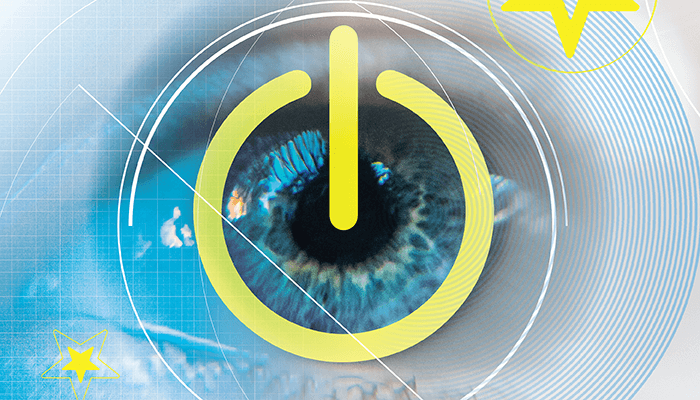 Original eye image from Unsplash.com
Original eye image from Unsplash.com
A 2016 systematic review and meta-analysis of the prevalence of myopia projected that half of the world’s population will be myopic by 2050 – a staggering five billion people. It also predicted that one billion would face myopia-related ocular complications and vision loss as a result of high myopia (1). With global organizations, including the International Myopia Institute, reporting that myopia cases worldwide are still rising in accordance with the predictions made eight years ago, the need to take action has never been clearer (2).
Although Europe currently has a lower prevalence of myopia than some of its neighbors (including East Asia and North America at 40 percent), it is no exception to the trend – and the increasing rates are most noticeable in school-aged children (3).
But what is it like to actually observe this increase within the patients you see in your practice? Here, we speak with several eyecare professionals from across Europe to explore current attitudes towards myopia, the limitations of available myopia control measures, and their hopes for the future.
Is myopia a problem in your country? If so, could you share some epidemiological data?
Wolf Alexander Lagrèze – Germany: There is quite a lot of public, scientific, and clinical concern, but I would not term it a “problem.” Many ophthalmologists as well as opticians have begun to offer active myopia management over the last few years. It basically all started after the publication of the ATOM2-data in 2012 (4), and the seminal Nature review by Dolgin in 2015 (5). We’ve seen some competition between pharmacological and optical solutions as well as some potential conflicts of interest – especially when it comes to the latter. We have good quality, national data (from the KIGGS study) that shows that there was not a significant increase in myopia rates over the 11 years from the first baseline study. However, the potential influence of smartphones and other devices are not yet reflected in the data (6). Additionally, the rate of myopic spectacle prescriptions have not changed (7). So, it seems that we are not seeing the often cited “myopia pandemic” in Germany.
Andrzej Grzybowski – Poland: Children in Poland share similar environmental risk factors with other European countries. We have a myopia prevalence between 35–45 percent in teenage and young adult groups, with a tendency to increase. There are a growing number of young myopes who are developing the condition starting between five and six years of age.
Dominique Bremond-Gignac – France: Myopia is definitely a concern in our country as its prevalence has increased to the point that it is now present in between 35–40 percent of our young adult population. The study of Leveziel in a large French population demonstrated the increased frequency of myopia and the need to control it (8, 9, 10).
Paolo Nucci – Italy: Yes, the “myopidemia” is starting to be considered a problem in our country and we, as pediatric ophthalmologists, can be “blamed” for this.
Our frequent presence in both the media and in pediatric congresses all over Italy has contributed to families being more alert about the possible increase in the prevalence of myopic children. As a matter of fact, we face a clear increase of myopia defects in patients under the age of eight in the last five years. In our setting, a university outpatient clinic, in 2014, two out of every 100 myopic patients were under eight years old. In 2022, that figure had risen to nine out of 10 (11, 12)!
This might possibly also be related to the general awareness from ophthalmologists, opticians and pediatricians that low dose Atropine and, more recently, defocus lenses, are effective treatments. Their proactivity is responsible for the increase in referrals.
Carla Lança – Portugal: Myopia is a condition of public health concern in Portugal. A recent systematic review and meta-analysis concluded that the prevalence of refractive error in Portugal is 32 percent (13). Myopia affects between 2–4.5 million Portuguese individuals. Although data on myopia prevalence and myopia progression in Portugal are scarce and heterogeneous, there are some reports that show myopia prevalence to have almost doubled in school children over the last few years. This increasing pattern seems similar to other countries in Europe, although further research is necessary to confirm this trend.
Kathryn Saunders – UK: Myopia is increasing in prevalence in the UK, but not to the same extent as is being seen in East Asian countries. This may be reflective not only of ethnic differences in the susceptibility to myopia, but of the different lifestyle and less intensive early education patterns in the UK compared with many East Asian countries. The Northern Ireland Childhood Errors of Refraction (NICER) study determined prevalence of myopia using robust measures in a population-based study in 2006–2008 as 1.9 percent in six to seven-year-old White children living in the UK, and 16.4 percent in those aged between 12 and 13 years (14). Compared with data published by Sorsby et al. in 1961, using cycloplegic refraction and derived from a population-based, non-clinical cohort, the prevalence of myopia had more than doubled in the intervening 50 years (15) – and this was before the rise of tablets and smartphones!
Olavi Pärssinen – Finland: Myopia is not regarded as a significant problem in Finland. Looking at the historical data, we can see that the prevalence of myopia has increased from World War II. In rural populations, the prevalence of myopia in adults between 41 and 50 years of age, born between 1920–30 was six percent. After the school reform in the 1970s, the length of compulsory education has been between nine and 10 years. Thereafter, the prevalence in the new generation increased to around 25 percent, but has not significantly increased from that since.
According to our data, the prevalence of myopia in first-graders – seven-year olds – is 1–3 percent. With fifth graders (11 and 12 years of age) it is 16 percent. In eighth graders, who are about 15-year-olds, the prevalence is around 20 percent. And in army recruits, aged 18–20-year olds, it is 22–24 percent – without a significant increase over the last two decades.
In the latest study, the prevalence of myopia among ethnically non-Finnish army recruits was about 10 percent higher. The Register of Finnish Visually Impairment cites myopia as being the cause of visual impairment in 1.7 percent of the 17,664 cases in the register in 2021 (16).
Are other doctors or parents aware of myopia – and what educational resources are available?
Wolf Alexander Lagrèze: Our ophthalmologic societies in Germany – DOG, BVA and GSNK – regularly publish and update national guidelines. Optical societies also do this, although sometimes whilst also subtly discrediting atropine. Unfortunately, schools are not currently involved, and health politics does not yet seem to be paying sufficient attention to the issue. However, almost all national newspapers regularly report on myopia.
Andrzej Grzybowski: The awareness of the problem among general ophthalmologists, other physicians, and parents in Poland is low. The highest profile educational campaigns are organized by the Foundation for Ophthalmology Development in collaboration with other relevant groups – this includes schools and teachers, as they play an important role in the prevention of myopia (17). There are some high-quality materials available at a specialized website that has been co-sponsored by the Polish Ministry of Science and Education. Even with this, there are sadly no national education projects organized by governmental agencies yet.
Dominique Bremond-Gignac: The Myopia National Campaign was developed in 2022 to advise the French population of myopia risks in children. There were TV and radio broadcasts as well as other media efforts that all aimed to relay this information to parents. This private initiative was supported with the financial support of pharmaceutical companies. It will be renewed in 2023. Additionally, paper flyers were distributed and epidemiology and myopia control solutions were presented in numerous meetings for ophthalmologists, opticians and pediatricians. The French Society of Ophthalmology (SFO) is also supportive, as well as eyeglass manufacturers.
Paolo Nucci: The Italian Society of Pediatric Ophthalmology & Strabismus, together with the World Society of Pediatric Ophthalmology and Strabismus, publishes guidelines and informative statements as well as organizing round tables dedicated to the issue of myopia. In the last three years, Hoya and Luxottica-Essilor started a promotional campaign in Italy, and Mostra Internazionale di Ottica (MIDO) implemented media presence with respect to optical treatment. Our Ministry of Health is not involved in any preventive campaign.
The epidemic of myopia has been featured on TV. It has been mentioned on several occasions in the press and at different congresses and meetings for both ophthalmologists and opticians. It is also mentioned in various sponsored meetings arranged by different companies marketing contact lenses. However, there is no national program for myopia prevention.
Carla Lança: The media are aware of the growing problem, and interviews are often published in magazines and newspapers for the general public. The Portuguese Society of Ophthalmology is raising awareness of myopia and its prevention among both parents and the general public. Some Portuguese ophthalmologists also publish information on myopia across social media. There is also a media campaign targeted towards children, with suitable materials explaining myopia and risks factors, and offering lifestyle advice to prevent myopia development. Alongside this, different lens manufacturers have started promotional campaigns on the use of optical treatments.
In Portugal, visual screening of children aged 2–4 targets amblyopia and includes a refractive assessment performed at the primary care level. However, some local and regional screening initiatives that target myopia occur with the support of municipalities, lens manufacturers, and optical shops.
Kathryn Saunders: There are no educational campaigns directed towards preventing myopia in the UK at present. There is increasing awareness among optometrists and parents, but there is a lot more work to do – particularly with parents and the wider public – to address the issue of why preventing myopia and slowing its progression is important. The College of Optometrists has an award-winning public information website called “Look After Your Eyes” which has some pages dedicated to children’s eye health and also to myopia management (18).
What control and management strategies are being used in your country?
Wolf Alexander Lagrèze: There are guidelines on daylight exposure and reading distance. In terms of treatment options, we use atropine 0.01 percent for at least two years for those progressing more than 0.5 D per year. Multi-segment spectacles and contacts are also in use for more refractive solutions. Fast progressors are also offered combined therapy using both atropine and optics. However, there are some problems with atropine that eye care professionals in Germany have to negotiate – the first of which is that its use is off label and only certain pharmacies produce or have it in stock. Additionally, health insurance tends not to reimburse the costs, leaving the burden with the patient (or more likely their parents). From the refractive side of things, there are a few problems with multi-segment spectacles and contact lenses, including the high costs to parents – and the fact that there are no producer-independent clinical trials to give us the reliable data we need!
One problem is that we still do not have formal screening programs for myopia (nor a really good one for amblyopia) – and that means that some children commence therapy far too late.
Andrzej Grzybowski: The first and most common therapy adopted for myopia control was atropine 0.01 percent; however, there has recently been a switch to the use of 0.05 percent atropine. Low-dose atropine is used as an off-label therapy prescribed only by physicians. It is reimbursed, meaning that the cost for the patients is relatively low. Contact lenses, including orthokeratology (ortho-k), are relatively uncommon in Poland, although they can be delivered both by ophthalmologists and optometrists.Recently introduced spectacles are becoming increasingly popular, and are delivered both by ophthalmologists and optometrists. One of the problems with optical therapies is that optometrists in Poland are not allowed to use cycloplegic drops, and so cannot measure objective refraction after cycloplegia. In those cases, children are managed either by pediatric ophthalmologists or by joint ophthalmology-optometry clinics.
Dominique Bremond-Gignac: The primary myopia control method in France is defocus glasses because the cost is generally acceptable, being approximately €100 higher than regular glasses, and is clearly easy to adapt. The second method of controlling myopia comes through the use of low dose atropine because it is fully reimbursed. Defocus contact lenses and ortho-k are less common – both because of the cost and the difficulty of adaptation.
To improve the problem, we need to improve screening for the early detection of myopia in children, for those between the ages of three and four, usually by orthoptists, and then again at six-years-old, when they’re at school. The environmental risk factors of myopia are not well known or followed by parents, so this must also change. Finally, the fact that myopia control solutions have a cost (except low-dose atropine) may also affect parent perceptions. In young adults, refractive surgery is proposed without comprehension of myopia-related disease.
Paolo Nucci: In Italy, outdoor activity is mainly promoted by pediatric ophthalmologists, pediatricians, and, in some parts of the country, by school teachers. My personal approach is prescribing atropine 0.01 in the treatment of myopia, as soon as it starts. Very recently I have also done so in children younger than six without what I call, “protective” hyperopia in familiar myopia, and do so with or without glasses prescription, according to the child’s needs. Later on, we use a combined optical and pharmacological treatment, while after puberty we switch to defocus lenses until they are age 16–18. At this time, youngsters generally prefer contact lenses, so we try to allow for the possibility of defocus contact lenses.
The main problems are related to the fact that atropine is a galenic preparation – and sometimes the preparation is not adequate (19). We can’t forget that the cost is also highly relevant, being more than €30 per bottle, and any prescription cannot be used more than once. Additionally, compliance must be checked often. Defocus lenses are expensive and the frequent adjustments hinder adherence.
Carla Lança: Various treatments are used in Portugal, including low-dose atropine, novel myopia control contact lenses and glasses, and ortho-k. However, there are some eye care professionals that still offer single vision glasses. Ortho-k is offered by some optometrists. Some eye care professionals also recommend that children increase their outdoor activities and advocate for changes in lifestyle, such as the reduction of non-educational near work and screen time. Although there are several options available for myopia control, there are still some challenges. An example of this is the fact that parents with children on low-dose atropine, prescribed off-label, need to go to the pharmacy very often. Additionally, novel myopia control treatments may be difficult to implement in low socio-economic settings due to their high costs.
Kathryn Saunders: The optical methods of myopia control available in the UK to optometrists and ophthalmologists include ortho-k, multifocal soft contact lenses, and peripheral defocus spectacle lenses. These are the “treatments” that are licensed for myopia control. Primary care optometrists have good access to all these options and are taking them up and offering them to patients. The major challenge is the cost – they are not covered by the National Health Service’s (NHS) voucher, which covers the cost of basic spectacle lens and frame for children under 16 years of age. This obviously limits access for some patients and may be a psychological hurdle for parents not used to paying for their children’s spectacles nor understanding the long-term value of myopia control.
Atropine is not licensed for myopia control in the UK – at least, not yet! However, I am aware that it is being used off-label via compounding pharmacies by ophthalmology colleagues. The challenge with that option is the difficulty in knowing what dose is being applied. Low dose atropine comes out of solution readily and therefore the dosage applied is likely variable, making the efficacy pretty much unknowable.
There is also the relatively new option of low level red light therapy. The device from SunRising, which comes from Mingguang He, has MHRA approval – but there is no published data regarding efficacy for myopia control for non-Chinese children (that I’m aware of). However, this home-based intervention, which takes three minutes, twice daily, could be a low-cost option used alone or in combination with other interventions.
Olavi Pärssinen: Children’s vision screening in Finland is conducted by nurses regularly throughout a child’s life. Generally, screenings will occur around the ages of five, seven, 11, 15 and 17 years old. In addition, if the child has any problems with their vision or if vision in either eye is less than 0.8 on the Snellen scale, they are sent to an ophthalmologist or optician free of charge.
Atropine drops are not available in Finland, so the primary recommended treatment is the use of full corrected spectacles. Some older school children wear contact lenses. The greatest problem with contact lenses has been corneal infections. During one summer month, more than 50 corneal infections were treated in the Ophthalmic Department of Helsinki University hospital. The infections were predominantly associated with the use of contact lenses. Refractive surgery in young adults is quite common, but the comprehensive data is missing. The opticians market different contact lenses as “correcting peripheral hyperopic defocus,” but again comprehensive data is lacking. Generally, Finnish ophthalmologists have a skeptical attitude to these lenses due to somewhat questionable scientific evidence.
Let us take one example about the topic of contact lenses meant to correct peripheral hyperopic defocus: MiSight. The first follow-up results in the prevention of myopia with MiSight lenses were published about five years ago (20). The results were summarized and found that two year treatment with MiSight Contact Lenses produced almost 40 percent lower myopia progression. The difference in myopic progression in that two-year follow-up study was -0.45 D compared with the -0.74 D difference in the single vision group, a difference of 0.145D per year. MiSight children were about one year older, when myopic progression is generally slower. Every practicing ophthalmologist understands the clinical significance of this.
But what if the results could be summarized so the two-year use of MiSight contacts led to 4.82 percent higher myopia?
The authors recently published a reanalysis of the same material (21) and found that, of a total of 41 Caucasian patients treated with MiSight contact lenses, 21 and 16 were considered responders in the first and the second year of follow-up, respectively. They also observed that time spent outdoors was a main factor in controlling axial eye growth in children treated with MiSight contact lenses. Other studies on the efficacy of MiSight are by no means conclusive due to high dropout rates or other flaws in methodologies, and all this for a solution that can cost around 1,000 euros a year!
As far as I know, only one optometrist in Finland is fitting ortho-k lenses, and she has around 100 patients, most of them migrants. However, the changes in visual function and corneal shape are reversed after discontinuation of ortho-k lens wear. There is not much data about the changes of axial length and choroidal thickness after discontinuation of the ortho-k treatment. Ortho-k lenses used at night compress and flatten the cornea. Additionally, each contact lens used during the night disturbs corneal metabolism – one symptom of which is nighttime thickening of the cornea.
If used for years at a time, pathological changes can be seen, including polymegathism and loss of endothelial cells. Physiologically, daily use of contact lenses would be safer. I’m looking forward to seeing randomized controlled clinical trials to show that use of ortho-k lenses would prevent some of the myopia related ophthalmic complications. Without that, it is difficult for me to find a medical justification for this treatment.
Other potential complications of ortho-k include microbial keratitis, pigmented ring formation, and altered corneal nerve pattern through the development of fibrillary lines. The estimated risk of microbial keratitis in children wearing ortho-k lenses is 13.9/10,000 patient-years, as opposed to 7.7/10,000 in all ortho-k wearers. This contrasts with the risk in daily-wear corneal gas-permeable lens wearers, 1.2/10,000, and is fairly similar to the risk in extended-wear soft contact lens wear.
There is insufficient evidence of different contact lens treatments, whether incremental benefits are found over the years and whether the effects are sustained.
What are the limitations in our current knowledge?
Andrzej Grzybowski: One of the major problems is the lack of clear predictors of future progression. We are aware of several risk factors, but it is still hard to decide how early to start the therapy and how aggressive it should be. Another interesting issue is how long to prolong the therapy. We have an increasing number of young adults with myopia progression who inquire about the possible therapy options. All evidence-based data on myopia control is based on populations between six and 18 years old, and, because of this, we unfortunately do not know much about the effectiveness and safety of available methods in this older age group.
There could be a role for new treatment methods, like red-light therapy, that appears to be very effective in clinical trials, but we need more real-life data on both compliance and safety.
Dominique Bremond-Gignac: We have not yet clarified all of the mechanisms involved in eyeball growth and myopia, so treatment is limited to what we know of hyperopic defocus in the retina midperiphery. Low-dose atropine presents a very complex mechanism on sclera and muscarinic receptors. Additionally, prevention and screening are insufficient and the cost of our system may mean that it’s actually a self-limiting system.
Paolo Nucci: I believe that, at this time, the main limitations of our knowledge are the result of a number of issues. Firstly, an overly fideistic attitude toward myopia management; the health community that are involved can all too often behave like soccer fans. Ophthalmologists favor pharmacological solutions, while opticians tend toward optical treatment. Myopia therapy works, but inconsistently, and this allows detractors to use this point to discredit both approaches. Secondly, there are problems in the research, with some key debates and controversial literature revolving around questions like atropine concentration or Defocus Incorporated Multiple Segments (DIMS) versus Highly Aspherical Lenslet Target (HALT) technology (22). Finally, the mechanism of action of myopia is not fully understood and there is still more to be done around understanding ortho-k.
Olavi Pärssinen: We need to find the right relationship between near work and avoiding it and, of course, outdoor activities, especially in young children.
Kathryn Saunders: There are lots and lots of limitations to our current knowledge! Myopia researchers are not going to run out of work anytime soon!
I’m particularly interested in finding the best ways to identify pre-myopes so that we can do some pre-myopia onset “mitigation” and hold off the onset for as long as possible. This could be through encouraging lifestyle interventions and applying pre-myopia interventions, such as low dose atropine – there is some emerging evidence for this being effective at slowing onset of myopia. Mitigation is likely to be equally, if not more effective, than intervening with myopia control once myopia is established as the younger the eye the faster axial elongation progresses.
We have developed an evidence-based risk stratification method for grading the risk of a non-myopic child becoming myopic and will be presenting data on the validation of this tool at ARVO 2023 (23). Other practitioners and I have found it useful to start those conversations with parents about lifestyle modifications that they can encourage and also, if the risk indicator shows they are at high or moderately high risk for future myopia, to initiate conversations about future myopia control options for when that child becomes myopic.
I also want to know more about why some children respond to some interventions better than others, and how we can best identify the right treatment for the right child at the right time. More information regarding the efficacy of combined treatments would be very helpful to the clinician, but these trials are expensive.
Carla Lança: There are several limitations to our knowledge on myopia, as the underlying causal mechanisms are still not fully understood. Most importantly, scientific evidence, on the effect of treating myopia progression and the prevention of pathological myopia, is lacking. Prevention of pathological myopia is an important goal that avoids potential
conditions that lead to visual impairment.
What will – or should – the future look like?
Wolf Alexander Lagrèze: Public education is extremely important and so are screening programs – not just for children but also for high myopes beyond 40 years of age. We need greater refinement in terms of atropine concentration depending on iris pigmentation and ethnicity. It would also be good to see a switch from refraction to eye length-based myopia control, along with more and better controlled clinical trials. Finally, I think if we are to see advancements in treatment, there must be a sustained and critical look at what might be termed pseudo-innovative technologies, such as light therapy of certain wavelengths.
Dominique Bremond-Gignac: I think the combination of two systems, such as defocus glasses or contact lenses and low-dose atropine, will be useful. Uncovering new physiopathology mechanisms may open a new era for other myopia control systems.
Paolo Nucci: Perhaps my biggest wish is for myopia to actually be recognized as a problem. If this happens, it should lead to a better understanding of the mechanisms behind the available therapies and, I would hope, avoiding litigious fights around atropine treatment dosage or defocus technologies. We also need a clear and reliable protocol for follow up. Ultimately, we need an increase in the number of pediatric ophthalmologists, and we should offer orthoptists a greater role in refraction.
Carla Lança: Several therapeutics are in development, such as light-based therapies. Nevertheless, it would be relevant to start early interventions before school age and probably before the pre-myopia state to either avoid myopia altogether or delay its onset. This may involve continued research on lifestyle interventions and a better control of environmental risk factors. Additionally, it may also involve collaboration between eye care professionals, public health professionals, and educational institutions.
Kathryn Saunders: I am not involved in the development of any new therapies myself, but combinations of the currently available therapies are likely to be useful and more application of early interventions, ideally before onset, on top of the lifestyle changes have promise. Over the next 10 years, I’d like to see if there is potential for NHS funding for myopia management in primary care settings so that access is more equitable and care is provided in the community by the largest eye care workforce who are best placed to identify and manage the vast majority of myopia.
Obviously, the small subset of children who are not “regular” myopes (some clinicians use the rule of thumb that if the number of diopters meets or exceeds the number of candles on the child’s birthday cake then they aren’t regular) may require ophthalmological input in a secondary care setting.
Olavi Pärssinen: It is an urgent task to find the most appropriate concentration and dosage of atropine, as well as clear and reliable guidance on when and to whom it should be recommended.
Andrzej Grzybowski: I believe that artificial intelligence (AI) algorithms can help develop non-invasive diagnostics of myopia; for example, based on fundus pictures, that would not need cycloplegia and enable us to conduct massive screening projects. Cycloplegic refraction is presently a major limitation for both high-volume screening projects and including optometrists in children’s myopia diagnosis in some countries. Moreover, AI can help prepare risk prediction models for both myopia onset and progression. The European Network for Myopia Prevention and Control that I coordinate works on both projects and we welcome experts who are interested in joining us.
I look forward to future therapies that can be more effective than what is currently available. In the meantime, however, I await clinical studies that show how combination of new modes of control can increase therapeutic efficacy.
 Original eye image from Unsplash.com
Original eye image from Unsplash.com
References
- BA Holden et al., “Global prevalence of myopia and high myopia and temporal trends from 2000 through 2050,” Ophthalmology, 123, 1036 (2016). PMID: 26875007.
- International Myopia Institute, “Myopia” (2023). Available at: https://bit.ly/40Z0lpe
- A Grzybowski et al., “A review on the epidemiology of myopia in school children worldwide,” BMC Ophthalmol, 20, 17 (2020). PMID: 31937276.
- A Chia et al., “Atropine for the treatment of childhood myopia: safety and efficacy of 0.5%, 0.1%, and 0.01% doses (Atropine for the Treatment of Myopia 2),” Ophthalmology, 119.347, (2012). PMID: 21963266.
- E Dolgin, “The Myopia Boom,” Nature, 19, 267, (2015). PMID: 25788077
- A Schuster et al., “Prevalence and Time Trends in Myopia Among Children and Adolescents,” Dtsch Arztble, 117, 855, (2020). PMID: 33612155.
- W Wesemann, “Analysis of spectacle lens prescriptions shows no increase of myopia in Germany from 2000 to 2015,” Ophtalmologe, 115, 419 (2018). PMID: 29110120.
- A Ducloux et al., “Progression of myopia in teenagers and adults: a nationwide longitudinal study of a prevalent cohort,” Br J Ophthalmol, 107, 644 (2023). PMID: 34937695.
- D Tricard et al., “Progression of myopia in children and teenagers: a nationwide longitudinal study,” Br J Ophthalmol, 106, 1104 (2022). PMID: 33712479.
- E Matamoros et al., “Prevalence of Myopia in France: A Cross-Sectional Analysis,” Medicine (Baltimore). 94, e1976 (2015). PMID: 26559276.
- P Nucci et al., “Cochrane corner: interventions for myopia control in children,” Eye (Lond), [Online ahead of print] (2023). PMID: 37142779.
- P Nucci, “Childhood myopia - a global perspective,” Graefes Arch Clin Exp Ophthalmol, 261, 41 (2022). PMID: 36227372.
- VL Alves Carneiro, JM González-Méijome, “Prevalence of refractive error in Portugal - A systematic review and meta-analysis,” J Optom, [Online ahead of print] (2022). PMID: 36050229.
- SJ McCullough et al., “Six Year Refractive Change among White Children and Young Adults: Evidence for Significant Increase in Myopia among White UK Children,” PLoS One, 19,11 (2016). PMID: 26783753.
- A Sorsby et al., “Refraction and its components during the growth of the eye from age of three,” Memo Med Res Council, 1,67, (1961).PMID: 13915328.
- O Pärssinen, “Increased prevalence of myopia in Finland,” Acta Ophthalmol, 90, 497, (2012). PMID: 21902818.
- Okulistyka21 (2021). Available at: https://bit.ly/42jB3Dm.
- The College of Optometrists, “Look After Your Eyes” (2023). Available at: https://bit.ly/3nrVhMs
- M Sacchi et al., “Efficacy of atropine 0.01% for the treatment of childhood myopia in European patients,” Acta Ophthalmol, 97, e1136 (2019). PMID: 31197953.
- A Ruiz-Pomeda et al., “MiSight Assessment Study Spain (MASS). A 2-year randomized clinical trial,” Graefes Arch Clin Exp Ophthalmol, 256, 1011, (2018). PMID: 29396662.
- A Ruiz-Pomeda et al., “Predicting factors for progression of the myopia in the MiSight assessment study Spain (MASS)” J. Optom, 15, 78, (2022). PMID: 33750678.
- P Nucci et al., “A comparison of myopia control in European children and adolescents with defocus incorporated multiple segments (DIMS) spectacles, atropine and combined DIMS/atropine,” PLoS One, 18, e0281816 (2023). PMID: 36795775.
- J Fulton et al., “The PreMO (Predicting Myopia Onset and progression) risk indicator reliably predicts future myopia in East Asian and UK children,” Presented at ARVO Annual Meeting; April 23-27, 2023; New Orleans, USA. Abstract#4957 - C0142 2023
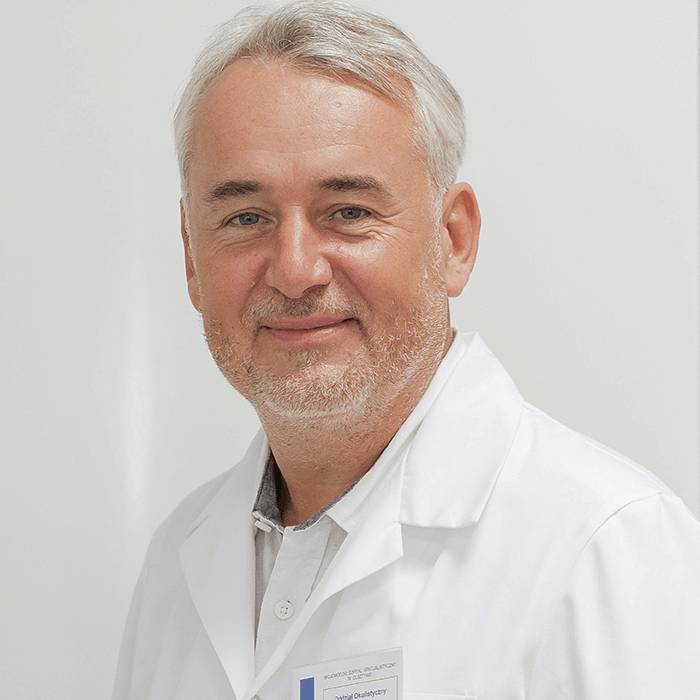
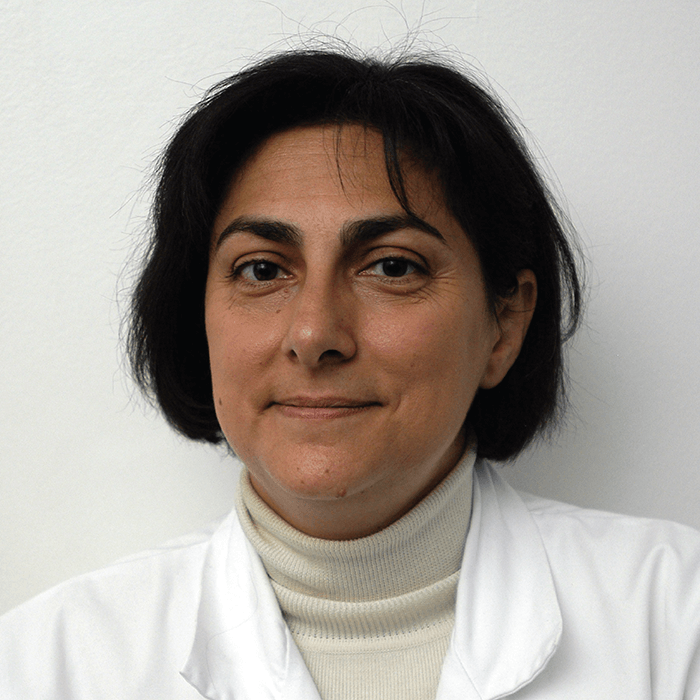 Dominique Bremond-Gignac is Professor of Ophthalmology and Head of the Ophthalmology Department at University Hospital Necker-Enfants Malades and Paris University in France.
Dominique Bremond-Gignac is Professor of Ophthalmology and Head of the Ophthalmology Department at University Hospital Necker-Enfants Malades and Paris University in France.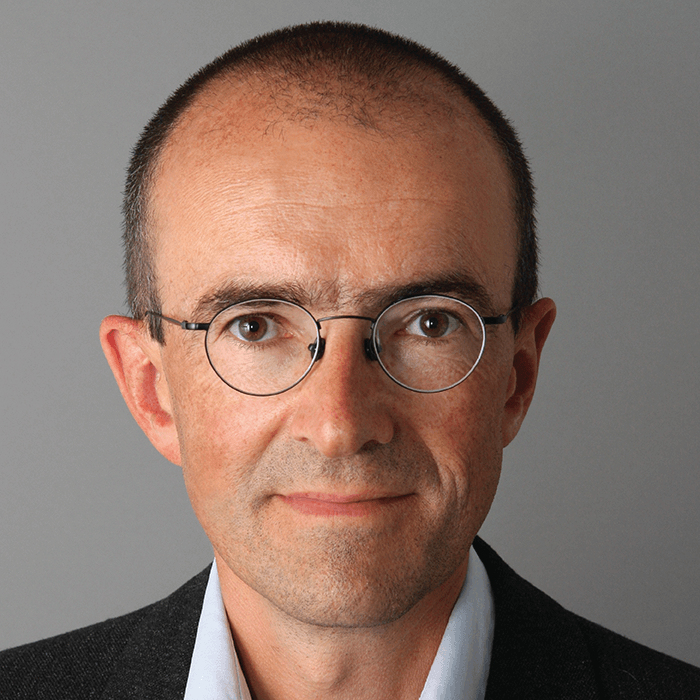 Wolf Alexander Lagrèze is the Head of Section for Neuro Ophthalmology and Pediatric Ophthalmology at the University of Freiburg, Germany.
Wolf Alexander Lagrèze is the Head of Section for Neuro Ophthalmology and Pediatric Ophthalmology at the University of Freiburg, Germany.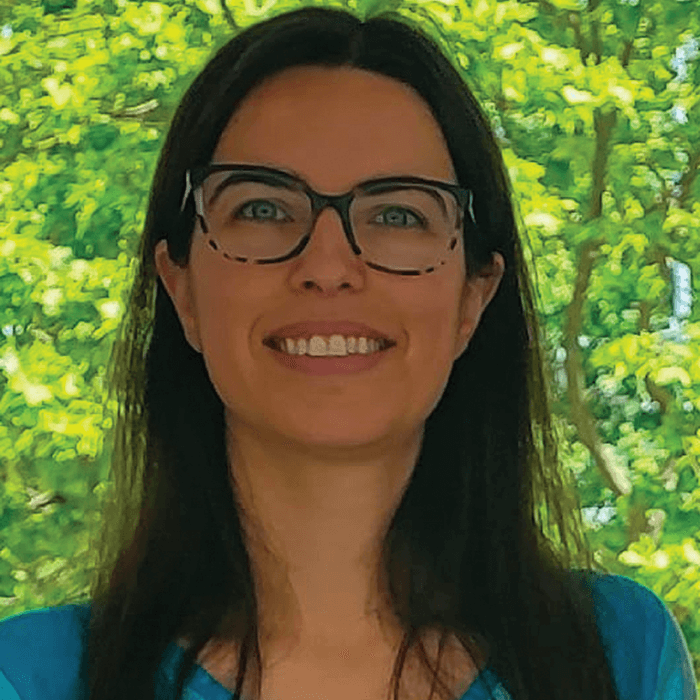 Carla Lança is an Assistant Professor of Orthoptics and Vision Sciences at Lisbon School of Health Technology (ESTeSL) in Portugal.
Carla Lança is an Assistant Professor of Orthoptics and Vision Sciences at Lisbon School of Health Technology (ESTeSL) in Portugal.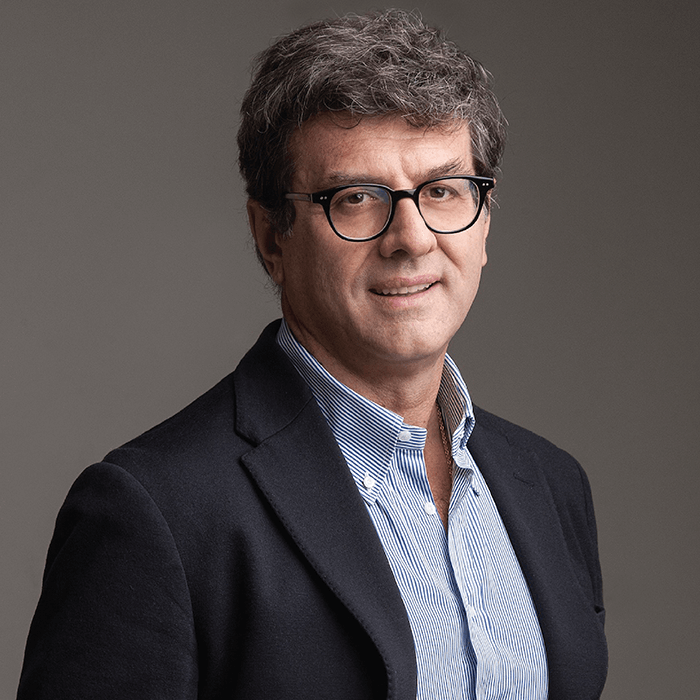 Paolo Nucci is Professor of Ophthalmology at the University of Milan and Chairman of the University Eye Clinic at the San Giuseppe Hospital in Italy.
Paolo Nucci is Professor of Ophthalmology at the University of Milan and Chairman of the University Eye Clinic at the San Giuseppe Hospital in Italy.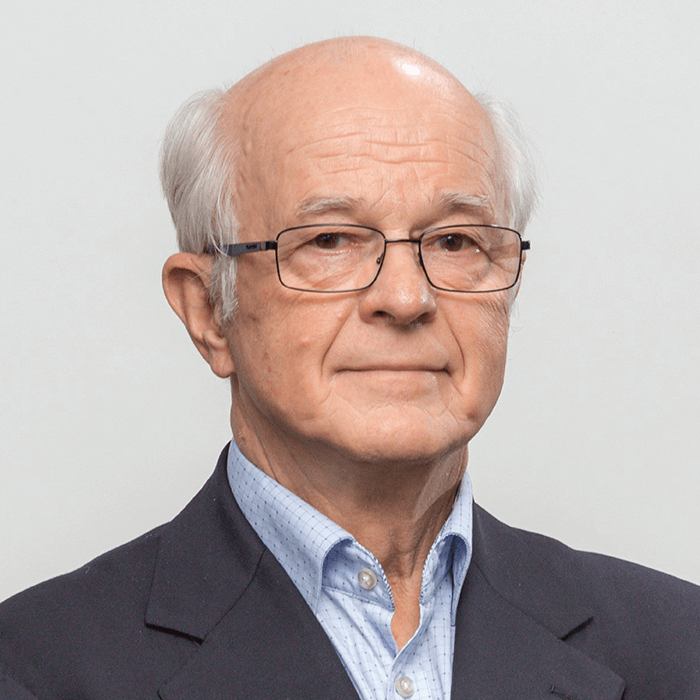 Olavi Pärssinen is Adjunct professor of Ophthalmology at the Department of Gerontology and Health Sciences, University of Jyväskylä, Finland.
Olavi Pärssinen is Adjunct professor of Ophthalmology at the Department of Gerontology and Health Sciences, University of Jyväskylä, Finland.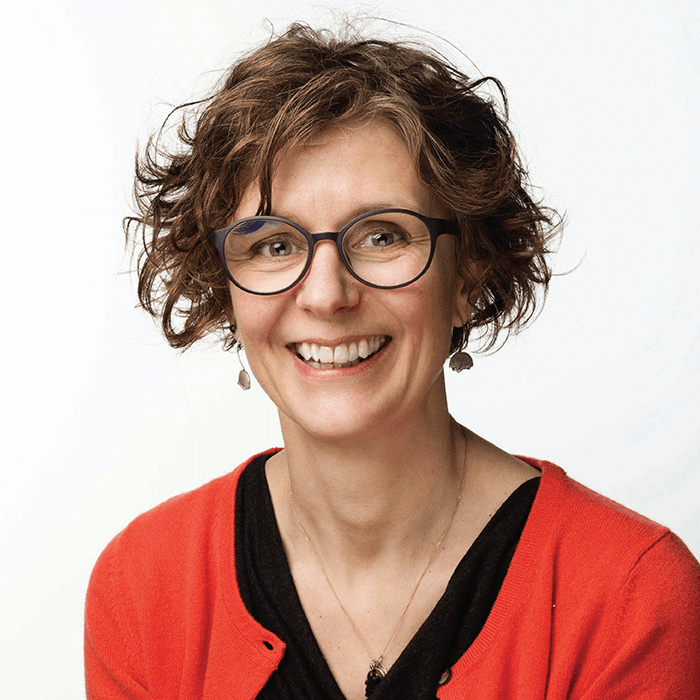 Kathryn Saunders is Professor of Optometry and Visual Science at Ulster University in Northern Ireland.
Kathryn Saunders is Professor of Optometry and Visual Science at Ulster University in Northern Ireland.